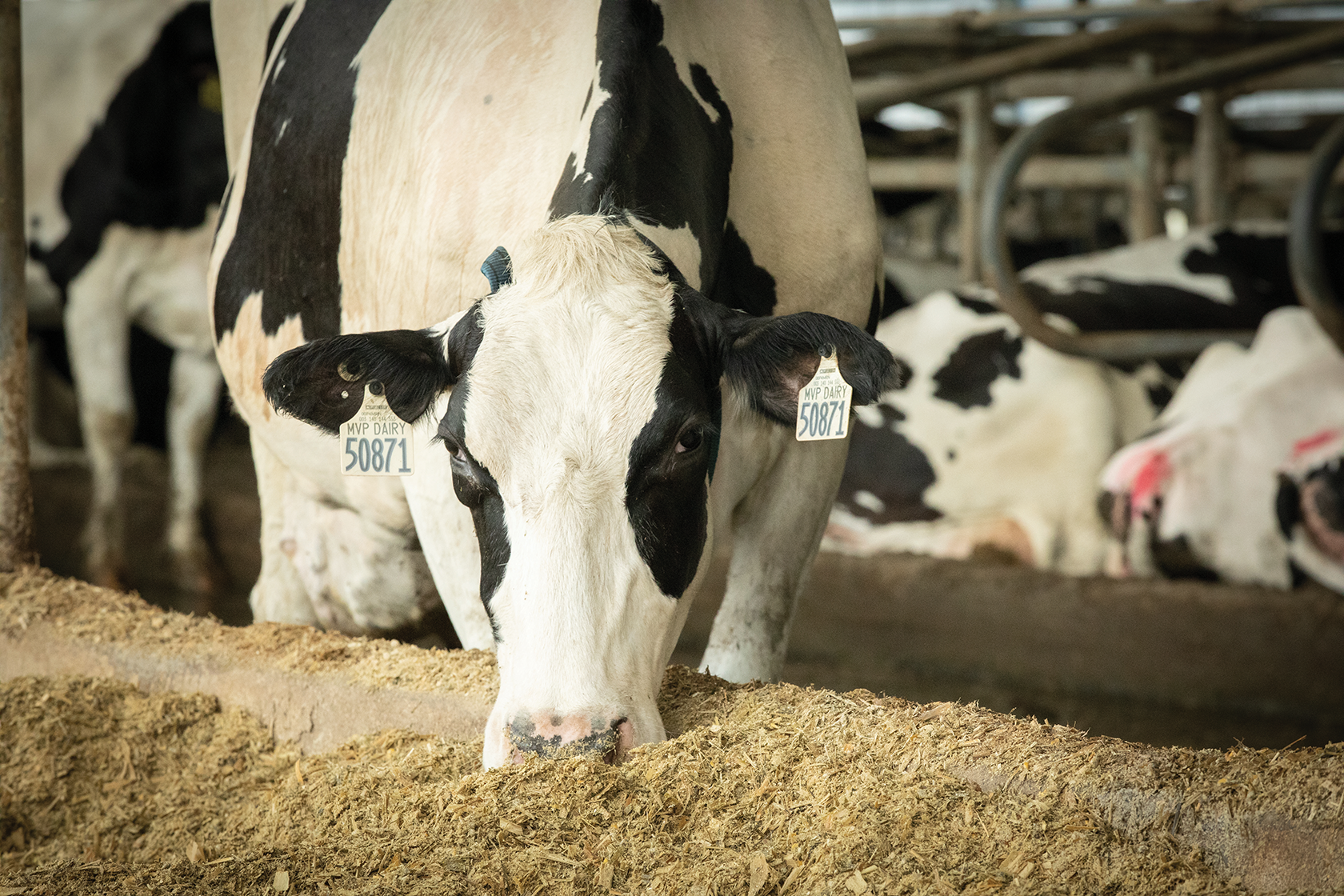After evaluating more than 50 herds in Michigan and Indiana who utilize Select Reproductive Solutions® (SRS®) consultative services, the average non-dairy cull rate was 32% with a range of 18-45%. Ideally, cows would leave the herd on the producer’s terms, meaning the cull would be voluntary and wouldn’t be predicated
by death or infertility. In a best-case scenario, the majority of cows leaving the herd would be mature cows that have finally dropped below a desired cutoff for milk production following a long, productive and trouble-free life, walking on to
a trailer to now provide beef for the consumer.
Knowing the industry benchmarks and outlining our goals are the first few steps of cracking cull rates. Next up is accurate recording of culls. Accurately recording all culls is crucial to truly understand the herd’s challenges and opportunities.
The top reason I see for many cows leaving the herd is “low production” and that notation looks like a voluntary cull. However, digging a little deeper often uncovers chronic mastitis, transition events and lameness. I also observe
many culls with no remark recorded, or the dreaded term: “unknown.” Unexplained deaths and illnesses warrant further investigation involving the producer’s entire team, from the veterinarian to the nutritionist to the reproduction/genetic
consultants. The top herds in my region maintain a death rate less than or equal to 4% and my experience shows that anything above 6% requires immediate attention. 
Consider your culling culprits to enact change
Injury: One issue that I see leading to involuntary culls, including deaths, is injury. Injuries warrant a total evaluation of facilities and animal handling by all employees. There is nothing worse than a healthy,
productive cow’s life cut short by an avoidable injury.
Mastitis, Low Production and Reproductive Challenges: Another common culprit of involuntary culling is chronic mastitis. Again, these cows may be recorded as leaving the herd for low production or reproductive reasons, when in reality, a chronic infection reduced her ability to produce milk and become pregnant. Today’s producers have many tools to combat mastitis, including long term solutions such as genetic selection for mastitis resistance and udder conformation.
Excess Heifers: Too many freshening heifers that force mature, productive cows out of the herd can negatively influence cull rates. Genetic strategies and inventory calculators determine the best heifer inventory for your herd. Michigan and Indiana herds that are producing impressive Energy Corrected Milk (ECM) maintain about 40% third and greater lactation cows in the herd and have excellent nutrition, cow comfort and transition care. These herds recognize that the extra effort in taking care of these mature cows pays for itself and carefully balance their replacement with an optimal proportion of genetically superior heifers.
Cull rate may seem like a simple metric, but digging deep to understand how your team is defining cull rate and establishing your goals is a critical component of profitability. As you look for ways to troubleshoot your cull rate, consider these top three
tips from producers for improving overall herd health and lowering involuntary culls:
2) regular records analysis with your consultant team to identify and monitor trends and patterns in cows leaving the herd
3) genetic selection using an index such as
Herd Health Profit Dollars®
(HHP$®) that creates productive, longer-lived cows.